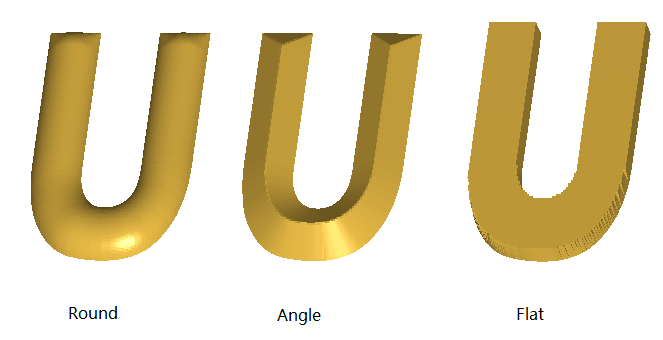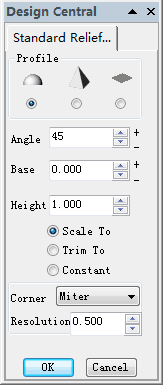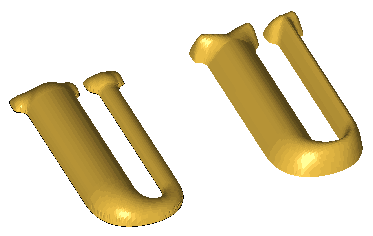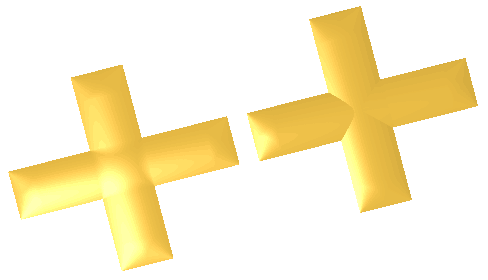Standard Relief
create surface shap based on one or more closed vectors.
Command:
Menu【Relief > Standard Relief】
Steps:
1.Select an closed vectors or text.
2. Menu【Relief > Standard Relief】
3. set the parameters
4.Click OK button.
There are three basic shapes available to use for creating a relief. They provide the starting point for creating all of the different surfaces available in Ucancam.


Parameter in dialog:
Profile:
Round,
Angle,
Flat
Angle: the angle of the profile.
the Angle parameter is used to define Round and Angle reliefs, Both positive and negative angles may be used between 0 and 90.
angle > 0, the relief is Convex.
angle < 0, the relief is Concave.
Base:
The Base parameter allows you to move the relief surface up, creating vertical sides on the portion of the relief. If you are creating a new relief, a base dimension will create vertical sides around the perimeter of the relief.
Height:
1)Scale To:
Using this option first creates the surface in normal angle, and then the relief is scaled vertically so that its height matches the specified height.
2)Trim To:
The relief is first created using the normal angle, and then it is cut off at the specified height. It is useful is cases where you want to create a relief that has rounded or beveled profile up to a certain height, and then a flat top surface.
3)Constant:
all the height of section is same,the following two graphics illustrate the difference。

Corner: Round or Miter
The following image demonstrates the difference between selecting Round or Miter using a simple rounded profile.

Resolution:
The resolution of the relief defines the size of the grid units that make up the relief. A relief is a gridded surface and when a relief is created, it is necessary to define how large each grid unit should be.
If a resolution of 0.5 is set, then each grid unit will be 0.5 wide and tall. Therefore, the level of detail for the information on that relief will be limited 0.5.
The thing to remember is that reliefs in your drawing require memory that is directly related to the size of the relief and its resolution. As you increase the size of a relief, it requires more memory. If two reliefs are the same size and one relief is 0.5 and the other 0.25 , the second relief will require four times the amount of memory as the first. You can see that this is an important consideration when defining a relief. In general, you should define as low a resolution for a relief as will accommodate the level of detail for that relief.
